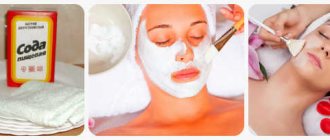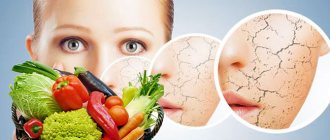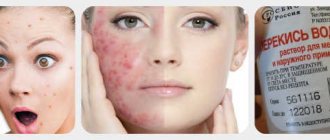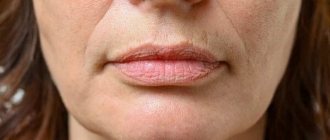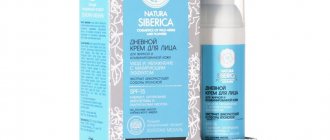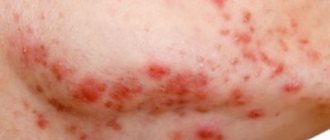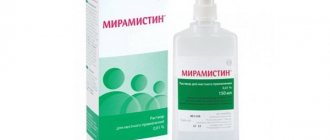The British scientific journal British Journal of Nutrition published a study in the early 2000s that caused a lot of noise among anti-aging specialists. In it, nutritionists for the first time listed exactly which vitamins and nutrients should be included in the diet to nourish the skin and improve its properties.
Today, as analysts estimate, almost a third of the world’s population – mostly women – already use dietary supplements to maintain beautiful skin or would like to start taking them.
These conclusions are confirmed by figures: the market for vitamins and dietary supplements in Russia reached $367 million in 2020. And the growth doesn't plan to stop.
Experts believe that taking nutraceuticals in aesthetic medicine can slow down premature photo- and chronoaging of the skin and mitigate the course of some dermatological diseases.
Nutraceuticals are natural or identical to natural biologically active substances or their compositions. They are common in the form of dietary supplements or can be included in food products and are intended to replenish the deficiency of essential (irreplaceable) nutrients, increase the body's resistance to the effects of adverse environmental factors, target changes in metabolism, and slow down the aging process.
In 2020, the first line of premium bioactive skin complexes, Advanced Nutrition Program™, developed by the International Institute of Anti-Aging (iiaa) in the UK, became available in Russia.
The products solve basic cosmetological problems, complementing professional care and hardware techniques. The nutrient formulas, along with the high bioavailability of the ingredients, work in synergy, enhancing each other's effects.
The dosages are selected so that the cosmetologist can integrate the use of nutraceuticals into developed individual care programs for each patient with different skin problems.
Why is water so important for the skin?
Healthy skin contains 20-30% water. Both the appearance (elasticity, firmness, color) and the health of the skin depend on the level of hydration.
Dehydration can cause a wide variety of problems. Fine wrinkles, circles under the eyes, inflammation - all this can be caused by low moisture levels in the skin.
Water plays a huge role in the exfoliation process. When the moisture level in the skin decreases, the exfoliation process stops and dead cells accumulate in layers. Hello, dull complexion, dry, rough, flaky skin, clogged pores and inflammation.
Moisturizing the skin from the outside
Our skin is like a large natural sponge. It absorbs moisture from the atmosphere when air humidity is high (more than 50%).
Remember the condition of your skin in humid Thailand and dry Egypt. In the humid Asian climate, the skin is more hydrated even without makeup, and it seems that you don’t need to put anything on. Such a trick will not work with desert Egypt.
Moreover, when air humidity is low (less than 50%), exactly the opposite process begins. In our climate, the skin begins to dry out especially noticeably when the heating is turned on. Hot radiators make the indoor air too dry and moisture from the skin begins to escape into the atmosphere.
This is why a humidifier is so important in winter. And for dehydrated and dry skin, this is generally a must-have, regardless of the season.
Another way to increase skin hydration is through cosmetics. How? We will talk about this in more detail in the next post.
But still, the skin receives most of its moisture from the inside, not the outside.
Recipe
Making a face mask at home is not difficult - you just need to select the necessary ingredients and mix them in the correct proportions. It is equally important to know which recipes are suitable for which skin type. To create them, only natural ingredients and fresh products are used.
For dry skin
Dehydrated epithelium needs intensive hydration; it requires masks that can saturate the tissues not only with nutritional components, but also with liquid. Penetrating into the deep layers of the skin, the substances should restore the water-lipid balance, soften and restore. You can make such nourishing face masks at home using the following ingredients:
- Honey and egg yolk with the addition of oils (olive, grape seeds) and juices (lemon, carrots).
- Fruits (strawberries, apples, bananas, melons) with oatmeal, vegetable oil or sour cream.
- Light oils (jojoba, almond, avocado, sea buckthorn, wheat germ) with heavy cream, cottage cheese, honey.
A popular way to improve the properties of the created composition is to add esters (lavender, ylang-ylang, wild carrot, jasmine). They soothe irritated skin, relieve the feeling of tightness, and protect against the negative effects of ultraviolet radiation.
For oily skin
Excessively oily skin also needs nutrition. However, the masks used in such cases are subject to increased requirements: not to clog pores, but to help cleanse them, normalize the function of the sebaceous glands, relieve inflammation and eliminate acne on the face. The necessary qualities are inherent in the following compositions:
- Egg white with lemon juice, apple pulp, oils (almond, peach) and oatmeal.
- Yeast with curdled milk, rye flour or hydrogen peroxide.
- Cottage cheese with kefir, honey, oils or juices.
After such masks, it is recommended to wash your face with cool water, wipe your face with tea leaves and ice cubes. This will ensure not only good cleansing, but will also narrow the pores and bring the epithelium into proper tone. An anti-inflammatory and antiseptic effect can be achieved by adding esters of tea tree, sage, eucalyptus, and bergamot.
Masks for oily epithelium should delicately nourish the skin, cleansing pores and preventing the appearance of acne.
For normal skin
Oddly enough, normal skin also needs proper care, without which its quality will deteriorate significantly. The created cosmetic products will prevent premature aging, relieve fatigue and protect the epithelium from harmful external influences. The necessary nourishing face mask at home is often prepared from berries and fruits, mashed into a paste:
- Raspberries, strawberries, currants.
- Orange, grapefruit.
- Peach, banana.
- Apples, pears.
To this puree you can add egg yolk, oatmeal, and a few drops of essential oils - mint, rose, geranium, rosemary, orange, lavender, tea tree. Thanks to this composition, the skin can be nourished with vitamins and minerals, cleanse and lighten age spots, and prevent loss of tone and flaking.
Nourishing masks are becoming a necessary element of comprehensive skin care for any type of face. They are quite easy to create and can be used at home. But to obtain a pronounced effect, it is important to follow a number of rules: correct selection of the recipe, careful preparation of the face, regular use and following the recommendations of a specialist.
Moisturizing the skin from the inside
The circulatory system plays a huge role in moisturizing the skin from the inside. You drank a glass of water. How does this water get into the cells and get to the skin? Only with the help of blood through the blood vessels. It is the blood that transports water and nutrients throughout the body. The more water in the body, the better and the more it reaches, including the skin. Therefore, the “banal” advice - drink more water - really works (hurray! ☺).
In the skin, blood vessels are found in the lower layers - the hypodermis and dermis. In the dermis, water enters the “network” of hyaluronic acid, collagen and elastin and turns into a gel. Some of the moisture in gel form remains in the dermis, and some rises higher into the epidermis.
Even though there are no blood vessels in the epidermis itself, the hydration, health and appearance of this layer still depends on the blood vessels. If microcirculation in the vessels of the dermis slows down, this immediately affects the epidermis. Therefore, it is so important to strengthen blood vessels - both from the inside (with vitamins) and from the outside - with the help of cosmetics and massage.
Does this mean you can just drink a lot of water and not bother with moisturizers? Unfortunately no. Water supply alone is not enough. It needs to stay in the skin.
The water content in the upper (horny) layer of the epidermis depends on 2 important things:
- the presence of a natural moisturizing factor;
- the presence of intercellular lipids that form a barrier to transepidermal water loss.
Many terrible words were spoken. ☺ Don’t be scared, now we’ll figure it out. Let's start in order.
Cotton wool type facial skin care
Cleansing. Mix 1/2 cup almond flour with 1/2 cup organic milk powder. 4 tsp will make this mixture even more nutritious. brahmi powder (bacopa, Indian stinkhorn - it is sold in Ayurvedic stores, has tonic and rejuvenating properties). Store the mixture in an airtight glass container. Before use, prepare a paste of 2 tsp. powder, slightly diluted with water. Apply to face and massage gently for one minute. Rinse off with warm water. Use morning and evening.
Nutrition. Add 1 tbsp to the cleansing mixture, the recipe for which is given above. l. organic heavy cream for whipping and 10 drops of rose, neroli or jasmine oil. Massage the skin for 1 minute, then leave the mixture for a few more minutes to absorb. Use as needed. The mixture will keep in the refrigerator for several weeks.
Deep hydration. Massage skin in gentle circular motions from bottom to top and from center line of face to sides using pure, organic, cold-pressed sesame oil. Leave the oil on the skin for 20 minutes, longer if possible. Rinse off if necessary. Repeat the procedure daily.
Weekly mask. Mash the avocado. Add 10 drops of neroli or lemon oil. Apply to facial skin. Lie down and breathe deeply into your stomach for 20 minutes. Rinse with water.
Transepidermal water loss
Water does not stay in our body for long. A significant part of it passes through the epidermis and evaporates from the surface of the skin. This process is called trans-epidermal water loss (TEWL).
What enhances TEWL
Transepidermal water loss in the skin is a constant natural process. It is strengthened by:
- broken epidermal barrier;
- skin damage (wounds, cuts, scratches, burns);
- contacts with solvents and surfactants;
- extremely dry climate (low air humidity);
- high temperatures;
- too much sun and wind;
- low level of skin moisture;
- age.
In fact, everything that “offends” our skin increases TEWL. The most exposed parts of the body - the face and hands - are affected the most.
Help prevent transepidermal water loss in the skin: natural moisturizing factor and lipids (fats) of the epidermal barrier. NUF collects moisture, and lipids protect against leakage.
Pitta skin care
Cleansing. Mix 1/2 cup almond flour with 1/2 cup organic milk powder. 3 tsp will make this mixture even more nutritious. chopped orange zest, 2 tsp. sandalwood powder and 1 tsp. neem powder Store the mixture in an airtight glass container. Before use, prepare a paste of 2 tsp. powder, slightly diluted with plain or pure rose water. Apply to face and massage gently for a minute. Rinse off with cool water. Use morning and evening.
Nutrition. Make 3 tbsp. l. puree cucumber and apply to your face. Leave for 20 minutes.
Deep hydration. Massage your face with almond oil and leave for at least 20 minutes. Rinse off if necessary. Repeat the procedure daily.
Weekly mask. Make mashed banana. Add 10 drops of rose, sandalwood or ylang-ylang oil. Apply to facial skin. Lie down and breathe deeply into your stomach for 20 minutes. Rinse with water.
Natural Moisturizing Factor
The stratum corneum is the outermost layer of our skin. It consists of lifeless cells - corneocytes. The protein keratin and certain substances that absorb and retain moisture “live” in them. The complex of these substances is called natural moisturizing factor (NUF, natural moisturizing factor, NMF).
Composition of the NUF
The composition of a natural moisturizing factor is quite complex. This is not just a couple of elements, but a whole “cocktail”.
- 40% - amino acids;
- 18.5% - electrolytes (ions) of chlorine (chloride); sodium (sodium), potassium (potassium), calcium (calcium), magnesium (magnesium); phosphate;
- 12% - pyrrolidone carboxylic acid (pyroglutamic acid) and its salts (pyrrolidone carboxylic acid, PCA, sodium PCA);
- 12% - lactic acid and its salts (lactic acid, sodium lactate);
- 8.5% - sugars (for example, glycerin, hyaluronic acid) and peptides;
- 7% - urea (urea, urea precursor - arginine);
- 1.5% - organic acids (creatinine, urocanic acid - natural sunscreen and others);
- 0.5% - salts of citric and formic acids (citrate, formate).
The basis of the natural moisturizing factor is amino acids. The more amino acids, the better the skin retains moisture. The skin on the palms and soles contains fewer amino acids compared to other areas of the body, which is why hands and feet dry out so quickly and often need extra moisturizing.
Functions of the NUF
Natural moisturizing factor works in different ways.
- First of all, like a sponge, it attracts and absorbs moisture from the atmosphere into the corneocytes.
- Regulates the level of moisture.
- Maintains elasticity, plasticity and smoothness of the skin.
- Maintains a healthy epidermal barrier.
- Regulates skin pH (lactic, citric acids and potassium are responsible for this).
- Stimulates the synthesis of ceramides and improves skin barrier function (lactic acid).
- Maintains the exfoliation process at a normal level.
What destroys NUF
- Exfoliation. During washing, peeling (scrubs) and shaving, part of the corneocytes is removed, and with it the NUF. That’s why it’s so important to replenish it with moisturizers afterward (masks, serums).
- Frequent bathing. NUF consists of water-soluble components; too frequent and prolonged water procedures wash it out and dry the skin.
- Sun. Excessive UV irradiation destroys UVB and dries the skin.
- Low humidity. NUF attracts water from the atmosphere into the skin. When the air humidity is less than 50%, the reverse process begins - the NUF components draw water from the lower layers of the skin and release it to the air. This process can be prevented with the right cream.
- Age. The older we get, the more the amount of NUF decreases.
The role of lipids in skin hydration
A natural moisturizing factor retains moisture and replenishes its reserves in the stratum corneum. However, it alone is not enough for complete hydration. NUF needs to be “sealed” to “prevent the export of valuables from the country” - to prevent the evaporation of water from the surface of the skin.
How to do it? Lipids (fats) come to our aid in this difficult task. The lipid layer is the basis of the epidermal barrier and hydrolipid mantle.
To make it clearer what an epidermal barrier is, imagine a brick wall. The base of the wall is made of bricks. In the skin, the bricks are the corneocytes of the stratum corneum. They hold each other like hands with the help of protein bridges (desmosomes). The layer (cement) between the bricks of our skin is lipids (also called fats).
The reliability and strength of the epidermal barrier is helped by the hydrolipid mantle. This is a film on the surface of the skin, consisting of fat (lipids), sweat and acids formed as a result of the vital processes of the epidermis. Just as the walls are covered with plaster on top, the epidermal barrier is additionally wrapped in a hydrolipid mantle.
Water and water-soluble substances are not able to overcome the barrier of the epidermal barrier and hydrolipid mantle, because water does not dissolve in fat.
Thus, the lipid (fat) layer “seals” the moisture in the skin collected by the natural moisturizing factor. And this is also why it is so important to maintain a healthy epidermal barrier and hydrolipid mantle.
Important! Lipids are the nutrition of our skin. NUF is hydration. They only work together - it is useless to collect moisture without locking it. Remember, there is no hydration without nutrition, they are like 2 twix sticks - always together.
Company masterminds
David Alpert
Creator of the Advanced Nutrition Program™ brand, distributor of several professional beauty brands, and passionate environmentalist.
Lorraine Perretta
Head of Development of the Advanced Nutrition Program™, Senior Clinical Dietitian at a non-profit clinic in London, Research Fellow at the Institute for Optimal Nutrition, Member of the British Association of Nutrition and Life Sciences (BANT) and the Complementary and Natural Health Council (CNHC), author of Brain Food, speaker.

